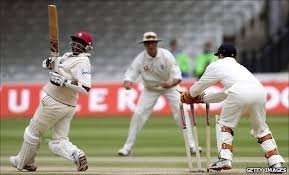
 |
| Index | ||||||
|
Stumped  Few dismissals give as much pleasure as a successful stumping does to the bowler and the wicket-keeper. It is the wicket-keeper who makes the stumping, but the bowler's art that makes one possible in the first place The majority of stumpings occur when the bowling is slow, and when the bowler bowls a delivery that is not a No ball that tempts the striker, momentarily, out of his ground. If the bowler has been crafty enough to bowl such a ball that the striker then misses, the wicket-keeper has the opportunity to take the ball and whip off the bails. If the striker is out of his ground - with no part of his bat or person grounded behind the popping crease marking - at the instant this happens, he should be given out Stumped by the umpire standing at the striker's end To achieve a stumping usually means that the wicket-keeper has displayed very fast reactions, since he will often have only a second at most to take the ball and break the wicket with it. He is not even allowed to take the ball as early as he could, and hence earn himself another fraction of a second; he has to wait until it has passed the stumps. It's no wonder that his work while 'standing up' to the wicket is usually regarded as the true measure of a wicket-keeper's talent If the wicket-keeper doesn't take the ball cleanly in the gloves, but lets it rebound off him, or he kicks or throws it and breaks the wicket with the striker out of his ground that should still be judged as a successful stumping It is possible to be stumped off a Wide but not off a No ball, though it is possible to be Run out off one, but the wicket-keeper, alone, is not permitted to effect this dismissal unless the striker attempts a run - another fielder has to touch the ball first. | ||||||